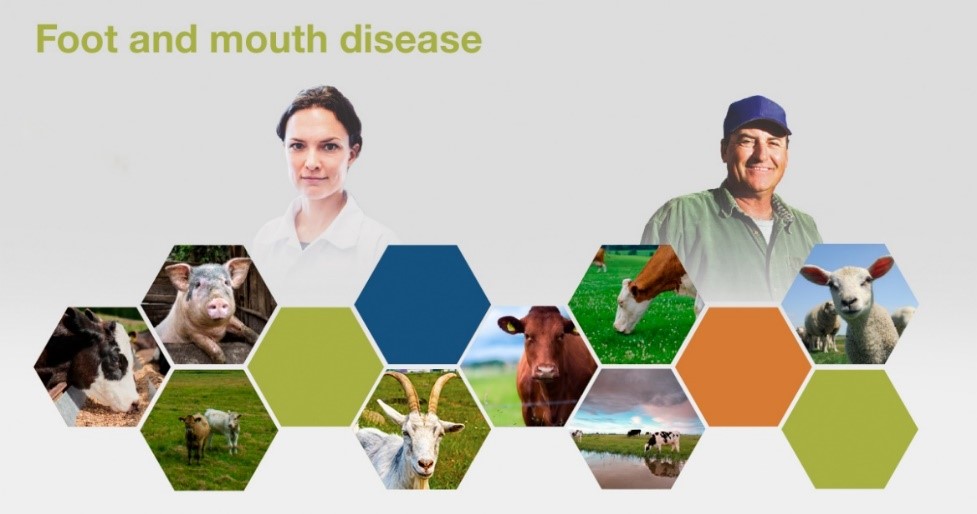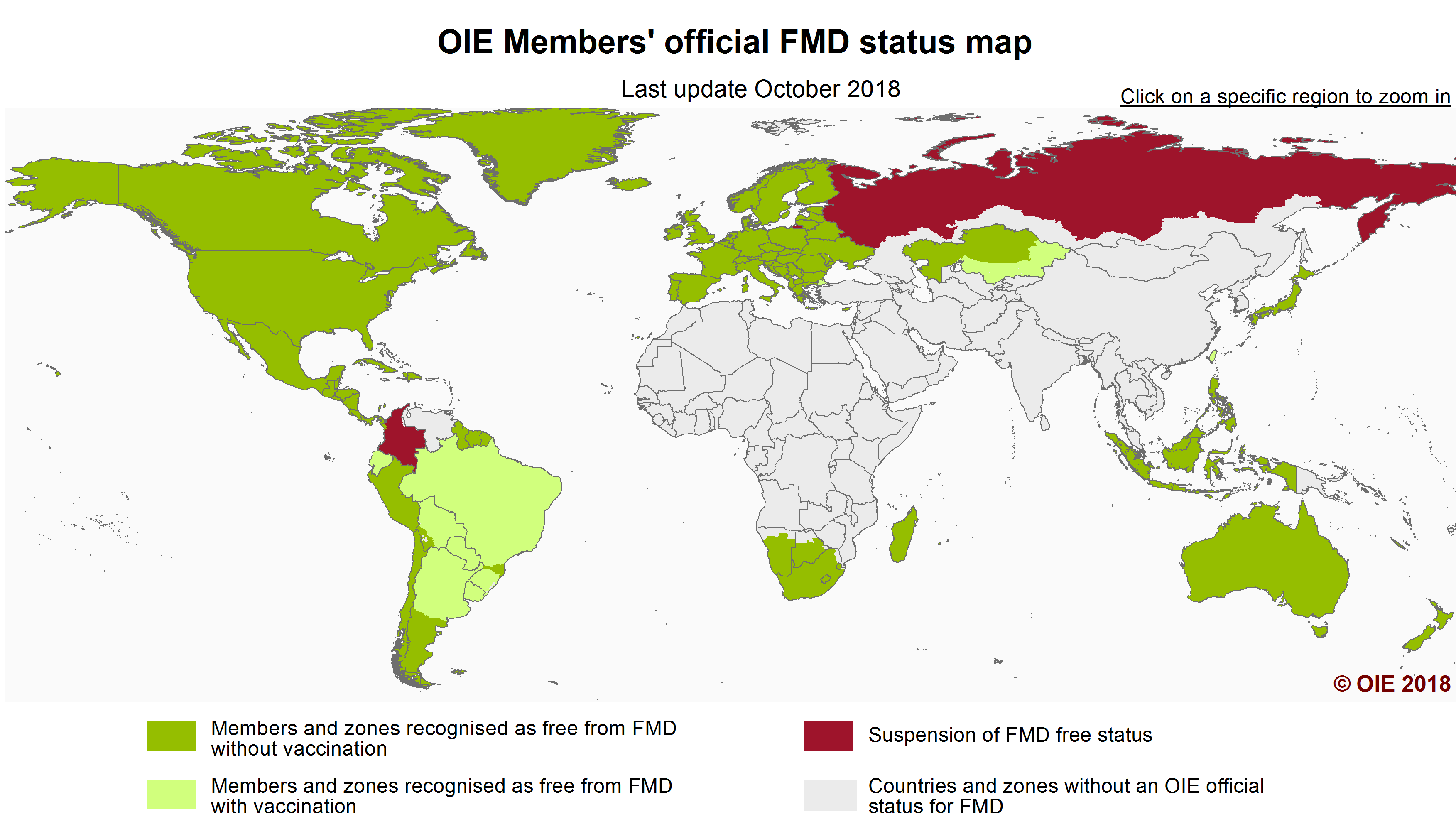



Where Would FMD Control Be Without Diagnostics?
ANALYSIS - Dr. Don King leads a team of 25 scientists and students who have recently celebrated 60 years of the World Reference Laboratory for Foot-and-Mouth Disease (WRLFMD) in support of global initiatives to control FMD.
Dr. Don King heads the foot-and-mouth disease (FMD) Reference Laboratory at The Pirbright Institute in the United Kingdom. The Institute conducts research and surveillance on a wide range of viral diseases of livestock including those that spread from animals to humans. The Pirbright Institute is designated as the World Reference Laboratory for Foot-and-Mouth Disease (WRLFMD) by the Food and Agriculture Organization of the United Nations (FAO) and is also one of a network of FMD reference laboratories defined by the World Organization for Animal Health (OIE).
“As part of our work as an international FMD Reference Laboratory for the OIE and FAO, we regularly receive samples from countries where the disease is endemic to provide information about what FMD virus strains may be present, contributing to our understanding about the global FMD situation,” said Dr. King.

Monitoring for potential FMD outbreaks
The WRLFMD uses the regional FMD information they collect to create reports that are shared with international partners. The WRLFMD also coordinates a larger network of international reference laboratories to share and collate data and understand the way in which FMD virus is spreading in different parts of the world.
“Our goal is to try to be as prepared as possible and to develop the tools required to control FMD in different locations,” said Dr. King. “Together with our international partners, we also try to predict onward risks of where FMD outbreaks may occur.”
“A large component of the work we do is to sequence FMD viruses from different parts of the world. Understanding the genetic relationship between outbreaks from one country to another can help us anticipate where FMD is moving and help countries prepare for the risk of future outbreaks.”
Historic spread of FMD
FMD has been present almost everywhere, with only a few island nations not having experienced an outbreak at some time in history.
 “Globally, FMD remains endemic in large parts of sub-Saharan Africa; it is also widespread across many countries in Asia; and it still continues to cause sporadic outbreaks in South America,” Dr. King noted. “In general, countries with more resources have been able to control the disease and have eradicated FMD from within their borders.”
“Globally, FMD remains endemic in large parts of sub-Saharan Africa; it is also widespread across many countries in Asia; and it still continues to cause sporadic outbreaks in South America,” Dr. King noted. “In general, countries with more resources have been able to control the disease and have eradicated FMD from within their borders.”
An example is Europe, where coordinated control via vaccination has been used to push FMD out of the region. However, FMD is still present in the European neighborhood where it poses constant threats to farmers in FMD-free countries. Currently, there is a significant effort underway to control FMD in South America where they have a well-established program, and over the last few decades are starting to see the benefits of prolonged, systematic vaccination together with other zoo-sanitary measures.
“Currently, there are only a very small number of FMD outbreaks reported and there is now the real prospect of seriously considering an FMD-free status across the whole continent of South America,” said Dr. King. “However, it has taken a lot of resources and has required significant inter-government cooperation to make this successful progress.”
Managing an FMD outbreak
The FMD outbreak that occurred in the United Kingdom in 2001 infected several thousand farms and had a devastating impact on not only the rural economy but the national economy as well. The work conducted by FMD reference laboratories is vitally important to provide evidence to support national FMD control policies.
“If FMD enters into an FMD-free country, where animals have not been vaccinated and are highly susceptible to disease, it will spread very rapidly,” he said. “We need to ensure that we have really effective farm-level surveillance that can monitor the spread of FMD, to quickly recognize cases, so any suspect cases of FMD can be quickly tested.”
When samples from suspect cases are collected in the field, it’s important for the laboratory to have diagnostic tests that can rapidly and accurately detect the FMD virus. The WRLFMD has a range of virological methods that can be used to identify FMD viruses in clinical samples, such as virus culture, antigen detection ELISAs, real-time RT-PCR and virus sequencing. These tests provide information that can then be quickly fed back to government to assist in the control of the FMD outbreak.
“The other aspect of FMD control and eradication is to regain FMD-free status as quickly as possible, which is where serological tests can be vitally important,” he said. “Serological surveys examine susceptible livestock populations to demonstrate that FMD is not circulating in the national herd. This is the strategy that most countries will adopt to reinstate their FMD-free status with international organizations such as the OIE.”
The WRLFMD and other FMD Reference Laboratories use specific tests to detect the virus and other tests that will detect specific antibodies against the virus to allow animals that have been exposed to the virus to be recognized.
“It’s fair to say if you just look at test numbers, for most outbreaks, the numbers of samples tested for FMDV-antibody detection using ELISAs vastly exceed the number of virological-virus detection assays. This is because these serological tests are performed for surveillance purposes to rule out disease across large areas,” he explained.
In the event of an FMD outbreak, FMD Reference Laboratories can test thousands or even millions of samples for serological testing purposes. These tests can also be useful in endemic countries to support extensive surveillance activities.
Treatment options for FMD?
There is no treatment for FMD, although vaccination is often used to control and prevent the disease. Most of the FMD vaccines used are “killed virus” preparations. These vaccines can be provided in two forms from suppliers. One approach is to use an unpurified vaccine where FMD virus is grown, then inactivated and inoculated into the animal. More often, the vaccine is purified to contain only the structural outer parts of the FMD virus (known as the capsid) away from the non-structural proteins of the virus.
“If highly purified vaccines are used, then it is possible to use a serological test based on non-structural proteins to recognize infected animals even when FMD virus antibodies are present due to vaccination,” Dr. King explained. “However, if an unpurified vaccine is used, it will elicit antibodies against the non-structural proteins as well as the structural proteins after vaccination. Under those circumstances, the NSP DIVA tests cannot be used effectively.”
One of the key priorities for global control of FMD is getting high-quality vaccines that are efficacious out on the market, especially in regions where FMD is endemic.
“People recognize the benefits of using purified vaccines and improving vaccine quality assurance is a really important driver for all of us,” he noted.
Industry collaboration key to success
Dr. King said the work undertaken by the International Reference Laboratories is designed to provide impartial advice across different countries.
“The challenges of FMD control are shared not only by the reference laboratories but also by farmers, governments and more widely by the commercial diagnostic companies and vaccine companies, who are vitally important,” said Dr. King. “Without the tools provided by the commercial sector, FMD control is much more challenging. An ability to rapidly respond to outbreaks requires effective coordination and communication between all stakeholders. It’s why the relationships between the reference laboratories and commercial companies are so vitally important.”
Explore the Thermo Fisher Scientific Animal Health portfolio and our 50+ Years of Expertise. Applied.
For Veterinary Use Only. For In Vitro Use Only. Regulatory requirements vary by country; products may not be available in your geographic area.




